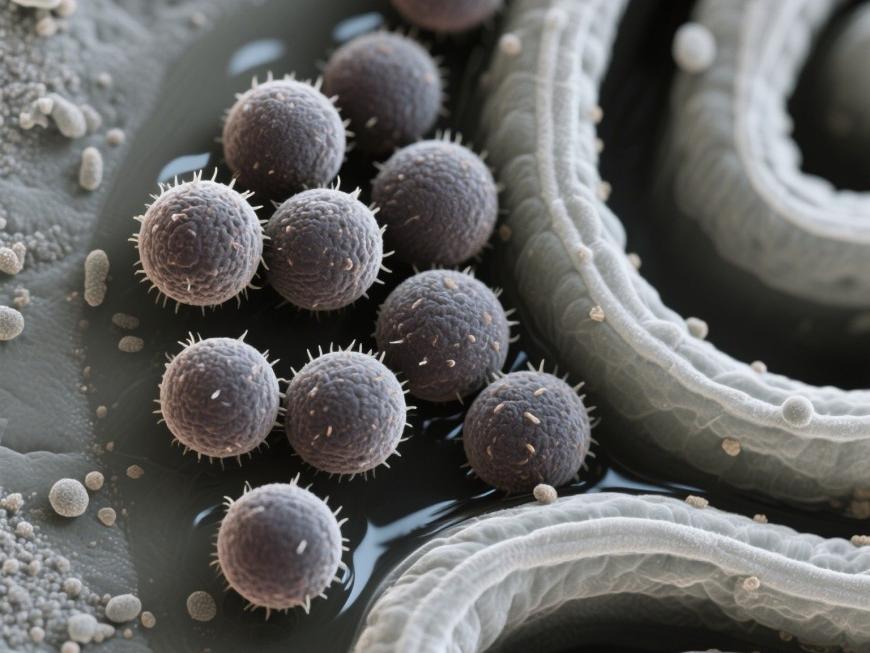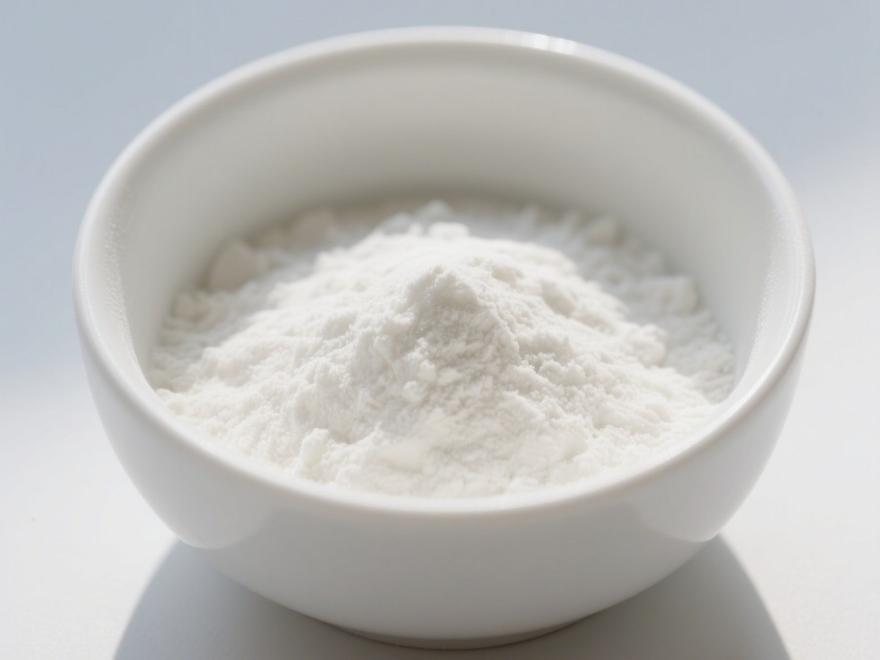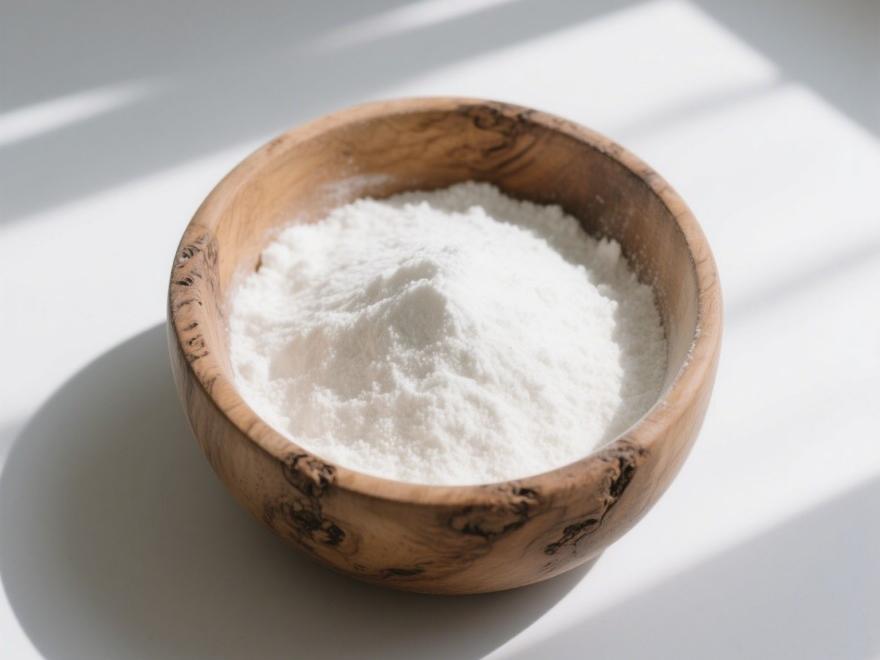What Is a Medium-Chain Triglyceride Diet?
Epilepsy is the second most common neurological disorder,with a prevalence rate 의0.5% to 2% 에서the general population. Most patients can achieve good control with antiepileptic drugs (ASMs),but approximately 30% of patients do not respond to ASM treatment, 그리고this condition is referred to 로refractory epilepsy (RE). RE) [1]. Medium-체인triglycerides (MCT, C6–C12) are triglycerides composed of approximately 60% caprylic acid and 40% capric acid, which provide fat.
MCTs are more easily ketogenic than long-체인triglycerides (LCTs), so in 1971, Hartenlocher [2] introduced the medium-chain triglyceride 다이어트(MCTD) as a modified version of the classic ketogenic diet(CKD). Compared to the CKD, the MCTD showed no statistically significant difference in efficacy, and only approximately 45% of dietary energy is provided by these medium-chain fats, thus allowing for a larger carbohydrate component [3]. Currently, MCTD is used worldwide for the treatment of refractory epilepsy, primarily in children but also in adults [4]. The purpose of this review is to describe the latest advances in our understanding of MCTD for the treatment of seizures.
1 Metabolic characteristics of MCT
Medium-chain triglycerides (MCTs) are a mixture of triglycerides with saturated fatty acid chains of 6–12 carbon atoms, specifically hexanoic acid (C6:0), octanoic acid (C8:0), and decanoic acid (C10:0), and sometimes include dodecanoic acid (C12:0, commonly known as lauric acid) [5]. Triglycerides are broken down by lipases in the gastrointestinal tract, with lipases preferentially hydrolyzing medium-chain esters. MCTs are hydrolyzed into medium-chain fatty 산(fatty acids containing 6–12 carbon atoms) [6]. These medium-chain fatty acids are absorbed by intestinal epithelial cells and bound to proteins, bypassing the lymphatic system, and are transported directly to the liver via the portal vein. The transport of medium-chain fatty acids to coenzyme A in liver cells does not require the action of carnitine transferase and directly enters the mitochondria for β-oxidation [7].
Through rapid β-oxidation, ketone bodies are produced: β-hydroxybutyrate, acetoacetate, and acetone [5]. Ketone bodies are converted into acetyl-coenzyme A, which undergoes the citric acid cycle to produce adenosine triphosphate (ATP)[8], yielding higher energy than glucose. Additionally, medium-chain fatty acids can cross the blood-brain barrier, with fatty acid concentrations in the brain reaching over 50% of plasma levels, providing an alternative energy source for brain cells (neurons and astrocytes)[9].
2 Mechanism of Action of the Medium-Chain Triglyceride Diet
2.1 Medium-Chain 지방이 많은Acids
2.1.1 Decanoic Acid
Decanoic acid can penetrate the blood-brain barrier and directly and selectively inhibit α-amino-3-hydroxy-5-methyl-4-isoxazole propionic acid (AMPA) receptors in animal models [10]. Decanoic acid is a broad-spectrum AMPA receptor inhibitor but exhibits varying potency on specific subunit combinations. Decanoic acid 억제is not reversed by higher glutamate concentrations and acts as a non-competitive inhibitor of AMPA receptors [4]. The inhibition of AMPA receptors by decanoic acid is voltage-dependent and more effective at depolarizing potentials.
This voltage dependence suggests that decanoic acid's therapeutic effect of reducing AMPA receptor currents is enhanced during postsynaptic activation and epileptic seizure propagation [11]. Decanoic acid is a well-known activator of peroxisome proliferator-activated receptor-γ (PPAR-γ), enhancing mitochondrial function by stimulating mitochondrial biogenesis and increasing the activity of mitochondrial complex I [12]. Additionally, studies have found that 300 µmol/L of decanoic acid can block the activity of the rapamycin complex 1 (mTOR) pathway targets in astrocytes derived from isolated rat hippocampus and patients with tuberous sclerosis [13].
2.1.2 Caprylic acid
Specific branched derivatives of caprylic acid provide more effective control of epileptic seizures [14]. New branched caprylic acid derivatives, such as 5-methylcaprylic acid, can provide in vitro and in vivo seizure control and AMPA receptor inhibition. Branched caprylic acid derivatives exhibit potent neuroprotective effects [15]. Caprylic acid also significantly increased the seizure threshold in a guanosine receptor-dependent manner under conditions of reduced blood glucose concentration [4].
2.1.3 Decanoic acid and caprylic acid
Both promote γ-aminobutyric acid (GABA) synthesis in neurons by enhancing 어진synthesis in astrocytes. Studies indicate that glutamine derived from astrocytes is a key substrate for neuronal GABA synthesis, and insufficient glutamine synthesis can lead to epileptic seizures [16]. MCT can directly deliver caprylic acid and caproic acid across the blood-brain barrier. Astrocytes are the primary 대사sites for caprylic acid and caproic acid in the brain. These compounds promote glutamine synthesis in astrocytes, thereby enhancing GABA synthesis in neurons and inhibiting epileptic seizures. Additionally, since medium-chain acyl coenzyme A dehydrogenase has a higher affinity for decanoic acid than for caproic acid, and decanoic acid has greater membrane permeability than caproic acid, decanoic acid metabolism is superior to caproic acid metabolism [17].
2.2 Ketone Bodies
2.2.1 Ketone bodies can directly or indirectly influence amino acid metabolism, leading to changes in GABA and glutamate concentrations.
① Ketone bodies can inhibit glutamatergic synaptic transmission: Ketone bodies can directly inhibit glutamate transporters, reducing the release of the excitatory neurotransmitter glutamate, thereby lowering neuronal excitability [18]. Experiments have shown that acetone and β-hydroxybutyrate can inhibit glutamate transport into vesicles by regulating vesicular glutamate transporters (VGLUTS), thereby reducing glutamate release [19] and suppressing epileptic seizures; ② Ketone bodies can induce GABA synthesis and inhibit GABA degradation: Ketone bodies can upregulate glutamate decarboxylase, thereby inducing GABA synthesis; ketone bodies can alter GABA transaminase activity to inhibit GABA degradation [20].
2.2.2 Ketone bodies can activate the ATP-sensitive potassium channel in mitochondria
ATP-sensitive potassium channels: ATP-sensitive potassium channels (KATP) are inwardly rectifying potassium channels regulated by intracellular ATP concentration. The excitability of neurons depends on ATP concentration. When intracellular ATP is at low concentrations, KATP channels open, allowing potassium ions to flow out, causing neuronal depolarization or even hyperpolarization, thereby reducing cellular excitability. Ketone bodies can increase the activity of KATP channels, promoting their opening [21], and inhibiting epileptic seizures.
2.2.3 Ketone bodies can activate potassium channels in the two-pore domain
Two-pore domain potassium channels (K2P) may be activated by ketone bodies and certain fatty acids, leading to sustained potassium ion efflux across the cell membrane, causing neuronal cell membrane hyperpolarization and reducing neuronal membrane excitability, thereby inhibiting epileptic seizures [20].

2.3 Adenosine
Increases adenosine levels in the brain and activates A receptors. Adenosine is an endogenous neurotransmitter with anticonvulsant effects, widely distributed in the nervous system, with the strongest effect in the hippocampus [22]. Adenosine kinase (ADK) phosphorylates adenosine to convert it into AMP, thereby reducing adenosine levels and regulating adenosine metabolism in the central nervous system. Studies have confirmed that MCT inhibits adenosine kinase, thereby increasing adenosine levels and activating inhibitory adenosine A1 receptors [23], thus suppressing epileptic seizures.
2. 4 Gut microbiota
The influence of the gut microbiota has gained increasing attention in epilepsy patients in recent years and has also been emphasized in the antiepileptic effects of MCTD. Olson [24] et 알다.found that a ketogenic diet with a fat-to-protein ratio of 6:1 selectively enriched Akkermansia and Bacteroides in mice, and the enrichment of these two bacteria alone was sufficient to reduce seizures. Pilla et al. [25] found that a medium-chain triglyceride diet increased the gut bacterial richness in dogs with idiopathic epilepsy, exhibiting antiepileptic and behavioral regulatory effects.
2.5 Mitochondrial function
MCTD promotes mitochondrial biogenesis, activates protective transcription factors such as peroxisome proliferator-activated receptor-γ2 (PPAR-γ2), and exhibits antioxidant and anti-inflammatory effects, thereby limiting the occurrence of seizures [26].

3 Efficacy and Safety of MCTD
Multiple studies have shown that MCTD is highly effective, with no significant differences compared to CKD. Neal [27] et al. evaluated the efficacy of MCTD at 3, 6, and 12 months, finding no statistically significant differences in the average percentage of baseline seizures between the MCTKD and CKD groups (3 months: CKD 66.5%, MCTKD 68.9%; 6 months: CKD 48.5%, MCTKD 67.6%; 12 months: CKD 40.8%, MCTKD 53.2%; P > 0.05). Liu et al. [28] summarized the studies by Schwartz and Liu and Sell comparing the efficacy of CKD and MCTKD and found that over 50% of children experienced a >50% reduction in seizures.
The ketogenic diet success rate for MCTKD is approximately 1.2:1, allowing for larger portion sizes and more fruits and vegetables, making it more palatable than CKD. It requires fewer micronutrient supplements and has lower rates of kidney stones, hypoglycemia, ketoacidosis, constipation, low bone density, and growth delay [29]. Studies have found that compared to CKD, MCTD intake reduces total cholesterol, increases high-density lipoprotein levels, and significantly lowers the total cholesterol/high-density lipoprotein ratio [30].
MCTD increases calorie production and reduces fat deposition, as MCT oxidation is greater than that of LCT, thereby reducing the opportunity for fatty acids to deposit in adipose tissue [31]. Additionally, due to the differences in digestion and absorption of MCTs and their subsequent effects on β-oxidation, MCTs provide a stronger sense of satiety [32]. In summary, the MCT ketogenic diet can lower blood lipid concentrations, improve lipid profiles, reduce body fat, and alleviate weight.

K. Vita is a new formulation of MCTD containing triglycerides with a C10:C8 ratio of 80:20. Studies have found that this formulation reduces the number of participants who withdraw from the study due to adverse reactions, with the most common gastrointestinal symptoms being excessive bloating and constipation, but these symptoms are mild and decrease over time, and can be alleviated through gradual introduction. This formulation has lower or no ketosis levels, but the average frequency of seizures was significantly reduced [33].
4 Operational Methods
MCTD can be implemented in hospitalized patients or in outpatient settings. MCTD is suitable for individuals with a large appetite, picky eaters, and children, adolescents, and adults over 1 year of age. It has the same efficacy as CKD but provides a more balanced nutrition profile.
4.1 Pre-initiation preparations
① Conduct a comprehensive assessment of the patient and their family, provide MCTD education, guide them on how to prepare meals, purchase a small-gram scale, a blood glucose meter, and urine ketone test strips, identify and manage complications, and learn how to plan menus.
② Patient information collection: clinical diagnosis, type and frequency of seizures; medications and administration methods; family history, growth, nutritional status, growth data (height, weight); complete dietary history; gastrointestinal issues, swallowing and chewing ability; and potential for dietary compliance. Complete auxiliary examinations: blood and urine routine tests, liver and kidney function tests, lipid profile, blood glucose, serum amino acid and carnitine analysis, blood electrolytes, trace elements (including selenium); ASM blood concentration testing (if necessary); urine organic acid screening; bone metabolism, bone age, and bone density testing; renal ultrasound and cardiac ultrasound (if necessary); electroencephalogram (EEG) and cranial MRI.
4.2 Initiation
MCTD can be initiated with or without fasting. ① Fasting initiation: Fasting is generally performed in hospitalized patients. Fasting should be maintained for 12–24 hours, with a maximum duration of 48 hours. During fasting, patients may drink water freely, and blood glucose and ketone levels should be measured every 6 hours. When blood ketone levels reach ≥2.5 mmol/L or urine ketone levels reach ++, fasting is discontinued. The patient's required caloric intake is calculated, and on the first day, 1/3 of the total intake is provided, followed by 2/3 on the second day, and full intake on the third day.
During fasting, closely monitor the patient's condition for changes and promptly observe for adverse reactions such as hypoglycemia or hyperketosis. If such symptoms occur, administer 30 ml of orange juice or an appropriate amount of 10% glucose solution for symptomatic treatment. Fasting can help patients enter ketosis more quickly, which is more beneficial for rapidly controlling seizures and is particularly advantageous for patients with refractory status epilepticus. ② Non-fasting initiation: This can be conducted directly in an outpatient setting, making it easier for patients to accept and adapt to. Patients start with one-third of their total caloric intake and gradually increase to full intake over 1–2 weeks. Weight loss, hypoglycemia, and ketoacidosis are less common during this period [34].

MCTD is divided into three meals and added to the Dietary Recommended Intake (DRI). Based on the DRI, various vitamins and minerals are added. The dietary ratio is 50% MCT, 21% LCT, 19% carbohydrates, and 10% protein. Foods may include milk, starches, vegetables, fruits, proteins, fats, and MCT oil. Daily calorie intake is calculated based on age/gender X activity/stress factors X basal metabolic rate (BMR) X (75%–100%). Protein is calculated using the Dietary Reference Intakes (DRI), with a minimum content of 0.8–1.2 g/kg.
Vitamin and mineral supplements are adjusted based on baseline biochemical markers to meet the difference between food intake and DRI, with serum carnitine levels maintained at 50–100 mg/kg. After initiating MCTD, promptly supplement with vitamins or minerals. If diarrhea or vomiting occurs, reduce the MCT oil content in the next meal by 10% until the patient can tolerate the diet. Vomiting may be treated with diphenhydramine. If vomiting recurs within 6 hours, discontinue MCT oil administration and administer intravenous normal saline for hydration; resume feeding with a 10% reduction in the MCTD dose. Reintroduce MCTD once tolerance is established.
4.3 Post-initiation
After initiating MCTD, monitor patients for seizure type, frequency, urine ketone levels, height and weight changes, and biochemical markers. Follow-up should be conducted monthly for the first 3 months, then every 3–6 months. As long as there are no side effects and urine ketone levels remain below 16 mmol/L, gradually increase the MCT content based on individual tolerance to control seizures. After comprehensive assessment, we continue to dynamically monitor the patient's condition by adjusting the dietary structure, carnitine, vitamin, and mineral supplements according to individual needs.
4.4 Discontinuation
Gradually reduce the MCT proportion by approximately 10% every 1–3 months to prevent seizure recurrence, while gradually increasing the carbohydrate percentage. After maintaining a 30% MCT diet for 6 months, introduce a low-carbohydrate diet without MCT oil. Even 후returning to a normal diet, avoid sugary foods and “junk food.” MCTD should be used for at least an average of 3 months. For patients with a reduction in seizures of >50%, treatment is typically discontinued after approximately 2 years; for children with nearly complete seizure control (reduction in seizures of >90%) and minimal side effects, the reported duration of efficacy of MCTD can extend to 6–12 years [35]. Children with GLUT-1 deficiency, PDHD, or tuberous sclerosis may require a longer duration of MCTD compared to those with other conditions [32].
5 전망
MCT is gaining popularity due to its superior properties in terms of intake, absorption, and metabolism. With the availability of MCT in various edible forms, such as milk or powdered emulsions, oils, powders, beverages, and nutritional bars, MCT can be more easily added to diets or enteral nutrition, leading to an increasing use of MCTD over the past two years. However, MCTD has not yet been widely or adequately applied. Further research is needed to fully understand the anticonvulsant and neuroprotective mechanisms of medium-chain fatty acids. Additionally, based on current studies, it remains unclear which MCT formulation is the ideal option for treating and preventing epileptic seizures. Determining the optimal composition and dosage of MCT will be crucial, necessitating further large-scale clinical trials.
참조
[1] Chen Ling, Huang Hao. Pathogenesis and research progress of refractory epilepsy. Chinese Journal of Geriatric Cardiovascular Diseases, 2021, 23(6): 670-672
[2]Huttenlocher PR, Wilbourn AJ, Signore JM이다. Medium-chain triglycerides as a therapy for intractable childhood epilepsy. Neurology, 1971, 21: 1097-1103.
[3]Neal E. “Alternative ” ketogenic diets. In: Masino SA, ed. Ketogenic diet and metabolic therapies. New York: Oxford University Press, 2017: 5-15.
[4]Augustin K,Khabbush A, Williams S,et al. Mechanisms of action for the medium-chain triglyceride ketogenic diet in neurological and metabolic disorders. Lancet Neurol, 2018 , 17(1): 84-93.
[5]Nimbkar S, Leena 음, Moses 네, et al. Medium chain triglycerides( MCT): State-of-the-art on chemistry, synthesis, health benefits and applications in food industry. Compr Rev Food Sci Food Saf, 2022 , 21(2): 843-867.
[6]Schonfeld P, Wojtczak L. Short- and medium-chain fatty acids in energy metabolism: the cellular perspective. J Lipid Res, 2016, 57: 943-954.
[7] Zhang Xingchi, Han Peitao, Li Xiaoli, et al. Research progress on medium-chain triglycerides. Food Research and Development, 2017, 38(23): 220-224.
[8]Lei E, Vacy K, Boon WC. Fatty acids and their therapeutic potential in neurological disorders. Neurochemistry International, 2016, 95: 75-84.
[9]Wlaz P, Socala K, Nieoczym D, et al. Acute anticonvulsant effects of capric acid in seizure tests in mice. Prog Neuropsychopharmacol Biol Psychiatry, 2015, 57: 110-116.
[10]Oldendorf WH. Carrier-mediated blood-brain barrier transport of short-chain monocarboxylic organic acids. Am J Physiol, 1973, 224: 1450-1453.
[11]Chang P, AugustinK, Boddum K, et al. Seizure control by decanoic acid through direct AMPA receptor inhibition. Brain, 2016, 139: 431-443.
[12]Simeone TA, Matthews SA, Samson KK, et al. Regulation of brain PPARgamma2 contributes to ketogenic diet anti-seizure efficacy. Exp Neurol, 2017, 287: 54-64.
[13]Warren EC, Dooves S, Lugarà E, et al. Decanoic acid inhibits mTORC1 activity independent of glucose and insulin signaling. Proc Natl Acad Sci USA, 2020, 117: 23617-23625.
[14]Chang P, Terbach N, Plant N, et al. Seizure control by ketogenic diet-associated medium chain fatty acids. Neuropharmacology, 69: 105-114.
[15]Chang P, Zuckermann AM, Williams S, et al. Seizure control by derivatives of medium chain fatty acids associated with the ketogenic diet show novel branching-point structure for enhanced potency. J Pharmacol Exp Ther, 2015 , 352(1): 43-52.
[16]Eid T, Ghosh A, Wang Y, et al. Recurrent seizures and brain pathology after inhibition of glutamine synthetase in the hippocampus in rats. Brain, 2008, 131: 2061-2070.
[17]Andersen JV, Westi EW, JakobsenE, et al. Astrocyte metabolism of the medium-chain fatty acids octanoic acid and decanoic acid promotes GABA synthesis in neurons via elevated glutamine supply. Mol Brain, 2021, 14(1): 132.
[18]Lutas A, Yellen G. The ketogenic diet: metabolic influences on brain excitability and epilepsy. Trends Neurosci, 2013, 36: 32-40.
[19]Li J, O’Leary EI, Tanner GR. The ketogenic diet metabolite beta- hydroxybutyrate(beta-HB)reduces incidence of seizure-like activity( SLA )in a Katp-and GABAb-dependent manner in a whole-animal Drosophila melanogaster model. Epilepsy Res, 2017,133: 6-9.
[20]Barzegar M, Afghan M, Tarmahi V, et al. Ketogenic diet: overview, types, and possible anti-seizure mechanisms. Nutr Neurosci, 2021,24(4): 307-316.
[21]Tanner GR, Lutas A, Martinez-Francois JR, et al. Single KATP channel opening in response to action potential firing in mouse dentate granule neurons. J Neurosci, 2011, 31: 8689-8696.
[22]Cunha RA. Neuroprotection by adenosine in the brain: From A(1)receptor activation to A(2A)receptor blockade. Purinergic Signal, 2005, 1: 111-134.
[23]Kim do Y, Simeone KA, Simeone TA, et al. Ketone bodies mediate antiseizure effects through mitochondrial permeability transition. Ann Neurol, 2015, 78: 77-87.
[24]Olson CA, Vuong HE, Yano JM, et al. The gut microbiota mediates the anti-seizure effects of the ketogenic diet. Cell, 2018, 173: 1728- 1741.
[25]Pilla R, Law TH, Pan Y, et al. The Effects of a ketogenic medium- chain triglyceride diet on the feces in dogs with idiopathic epilepsy. Front Vet Sci, 2020, 22(7): 541-547.
[26]Han FY, Conboy-Schmidt L, Rybachuk G, et al. Dietary medium chain triglycerides for management of epilepsy: New data from human,dog, and rodent studies. Epilepsia, 2021, 62(8): 1790- 1806.
[27]Neal EG, Hannah Chaffe, Ruby H. Schwartz, et al. A randomized trial of classical and medium-chain triglyceride ketogenic diets in the treatment of childhood epilepsy. Epilepsia, 2010, 50(5): 1109- 1117.
[28]Liu YM, Wang HS. Medium-chain triglyceride ketogenic diet, an effective treatment for drug-resistant epilepsy and a comparison with other ketogenic diets. Biomed J, 2013, 36(1): 9-15.
[29]Liu YMC, Haw A, Campbell K, et al. A prospective 12 months study: growth and lipid status of children treated with the classic and medium-chain triglyceride ketogenic diets. Epilepsia, 2007, 47(1): 141- 142.
[30]Liu YMC, Williams S, Basualdo-Hammond C, et al. A prospective study: growth and nutritional status of children treated with the ketogenic diet. J Am Diet Assoc, 2019, 103: 707-712.
[31]Baba N, Bracco EF, Hashim SA. Enhanced thermogenesis and diminished deposition of fat in response to overfeeding with diet containing medium chain triglyceride. The American Journal of Clinical Nutrition, 1982, 35(4): 678-682.
[32]Nur Izzati Zulkanain , Sharaniza Ab-Rahim , Siti Nazrina Camalxaman , et al. Medium-chain fatty acids in nutritional therapy: a review. Malaysian Journal of Fundamental and Applied Sciences, 2020, 16(3): 318-323.
[33]Schoeler NE, Orford M, Vivekananda U, et al. K. Vita: a feasibility study of a blend of medium chain triglycerides to manage drug- resistant epilepsy. Brain Commun, 2021, 3(4): 160.
[34] Expert Consensus on the Application of the Ketogenic Diet in Epilepsy and Related Neurological Disorders. Chinese Journal of Pediatrics, 2019, 30(11): 820-825.
[35]Groesbeck DK. Bluml RM, Kossoff EH. Long-term use of the ketogenic diet in the treatment of epilepsy. Dev Med Child Neurol, 2006, 48: 978-981.


 영어
영어 프랑스
프랑스 스페인
스페인 러시아
러시아 한국
한국 일본
일본






